|
Sample of computer hardware board
and card(1)versions definition
yjfy.com
At the beginning of this
century, the elimination of a large number of old computers in China
and the influx of foreign garbage computers led to the booming of
the dismantling machine. Under the e-commerce websites such as eBay
and Taobao, computer hardware collections were born in China,
forming a collection of CPUs and computer boards. Two large groups
of people. The collection of foreign computer hardware started
earlier. The collection of antique computer sets is the largest, and
the collection of various computer hardware is relatively weak.
At
the beginning of the collection, classic hardware and antique
hardware were very popular. With the richness and awareness of the
collection, the samples of computer hardware gradually became the
focus of collection. The collection without samples was only an
entry-level collection. This is because the sample production volume
is extremely small, and the number of deposits in the world is not
strange, especially in the early samples, each of which is
equivalent to an orphan; the sample belongs to the company's core
secrets in the past, with unique colors and mysterious Information
is inevitably fascinating; samples are mostly destroyed after the
official product is put into production, and it is a legend to be
retained. The protagonists of these stories or R&D engineers
unveiled the fascinating collections of the year, all of which are
rare top collections; or media evaluation agencies that clean up
outdated special test samples from time to time, basically familiar
with each other. Or an IT company that regularly processes or
disposes of inventory due to bankruptcy, and has a large number of
samples of all grades. And these samples are mixed in the old
hardware of the day, only a small part can meet with the hardware
collectors and be eye-catching. It is these characteristics that
make the sample the best in the hardware collection, the
identification and grading of the sample will inevitably become an
important topic for hardware collectors.
The
CPU is the core component of the computer and is the first choice
for the collection. It has the largest collection of people and is
the first to conduct sample grading. On April 30, 2005, the CPU
collector morkork posted the "Help
on sample versions" on www.cpu-world.com for the first time. The
CPU samples were graded and The_Mad was complemented. On December 13
of the same year, Henry, the webmaster of www.cpu-cn.com, gave a
grading of the CPU samples in the "Saving
the CPU Sample". The webmaster of www.cpu-es.com
graded the collected samples in a similar way. It can be seen that the classification of CPU samples has
reached a consensus, which is mainly divided into the following four
categories:
1. Mech
sample(MS)
Simply put, it is the earliest product model.

2. Engineering
sample(ES)
Small batch prototypes in
the product development phase, also known as prototype.
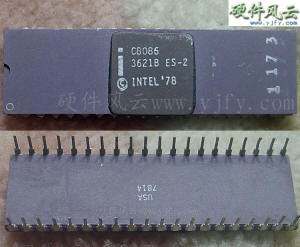
3. Qualification
Sample(QS)
Product stereotyped samples, internal testing.
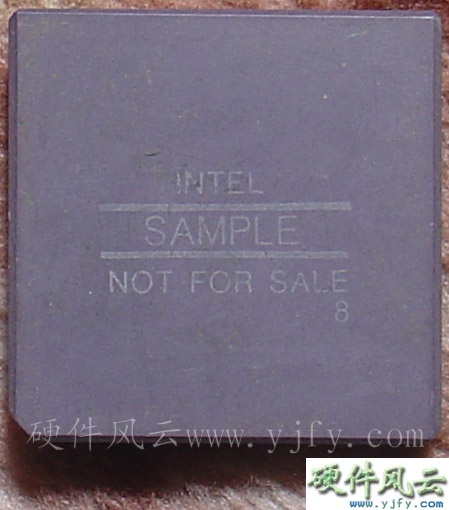 
4. Customer
Sample(CS)
Samples
of qualified products are sent to major customers for testing.

As a component of
computer hardware, the CPU is generally a small single chip, and the
classification is relatively easy. Computer boards are relatively
complex, usually one or more chips and countless components are
soldered on the PCB board, so the board classification is more
complicated. In particular, boards are rarely labeled like CPU
samples: ES, ENG.SAMPLE, MECH, PROTO, PROTOTYPE, Internal Sample,
EVAL, etc. to show their extraordinary identity. Although the main
chip on the board is similar to the CPU, there are similar
annotations: ES, ENG.SAMPLE, PROTO, PROTOTYPE, PT, Sample, etc., as
well as the production code of the foundry or no label. However,
boards loaded with sample-level chips are not necessarily
sample-level boards, and sample-level boards do not necessarily
carry sample-level chips. This makes the board's grading quite
difficult.
Over the years, the
issue of grading of board and cards has been a hot topic for
collectors and a certain consensus has been reached. Based on the
samples of thousands of hardware boards, I studied the sample
pictures and related materials on the collectors and the network,
and integrated the opinions of the collectors.
Five years ago, the
sample versions of board and card were defined from a hardware
collection perspective. Recently, some intel
sample cards have been collected, so it is conditional to partially
correct and perfect the sample classification of the board and cards
to form this "versions
definition",
and will be more in-depth in the subsequent "Board type" and "Chip
evolution" The feasibility of sample grading is verified.
There are two methods for
classifying the samples of board and cards:
One is a conventional
grading method similar to CPU grading:
1.Engineering sample(ES)
2.Qualification Sample(QS)
3.Customer Sample(CS)
The other is a plate type
grading method for board and card features:
1.Evaluation board
2.Reference board
3.Test board
The relationship between
the two divisions is as follows:
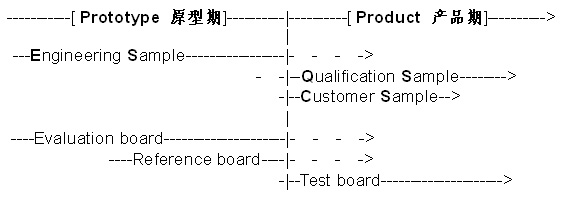
Intel
Corporation is the world's largest technology giant in the design
and production of semiconductors. It has strict standards in product
development, design and manufacture. This article takes the sample
card of INTEL i740 chip as an example to discuss the grading
standards of sample boards.
1.Evaluation board
To evaluate the
feasibility of the product, there are usually special connectors and
more jumpers for detection and debugging. Evaluation board for
boards and cards can be divided into Chip evaluation board and
Product evaluation board.
1.1
Chip Evaluation board
Chip Evaluation board
is mainly to verify the feasibility of the chip, so the materials
used are luxurious, and the number is counted in single digits. In
particular, the early Chip Evaluation board with chipset with
detachable chip is extremely rare, and any piece is regarded as a
god in the hardware collection.
INTELi740 Evaluation board
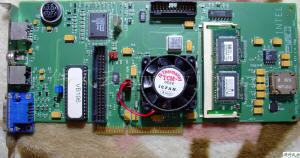
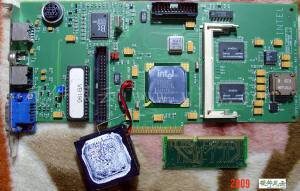
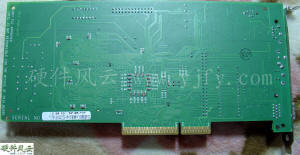
The above picture is the Intel Chip Evaluation board. The right
side of the front side of the PCB on the graphics card is marked
with the “INTELi740 Evaluation board”. This i740 chip has an
intel-specific ES label, serial number "Q601ES", which is
roughly the earliest i740 chip. The date marked on the back of
the PCB is 3497, and "NOT..." such as "NOT FCC APPROVED",
clearly indicating some failed certifications. Generally, the
finished board will pass the FCC certification and assign the
FCCID number. Usually, most of the sample cards do not have time
to pass the FCC certification, and some sample cards will mark
the pre-registered FCC ID number in advance.
Chip Evaluation board
is developed by chip design manufacturers and intimate partners.
The I740 chip was developed by INTEL-invested REAL 3D, so REAL3D
also has this chip evaluation board StarFighter-ISV. The version
of the chip on this card is also the earliest "Q601ES", and the
PCB date is 9737. The comparison shows that the two cards are
surprisingly similar except for the use of video memory.
REAL 3D StarFighter-ISV
Evaluation board

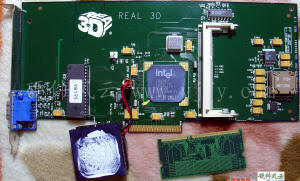
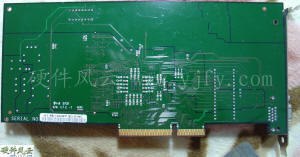
1.2
Product Evaluation board
Early sample chips were
produced in very small quantities and there were a lot of bugs, so
boards with early sample-level chips must be sample-level, but not
necessarily Chip evaluation boards, possibly Product Evaluation
boards. In the middle and late stage, the sample chip is not much
different from the finished chip, and it mainly appears on the
Product Evaluation board, and may also appear on the official
product.
As the I740 chip design
and manufacturing manufacturer, INTEL sold the Express 3D graphics
card based on the chip. The following picture shows the Product
evaluation board of Express 3D. The production date of the two cards
is only one week apart, but the product number is changed from
handwriting to stamp. The test board of Express 3D mentioned in this
article is the pre-integrated product. Printed on the PCB, the
earlier samples are visible, the more original, the more manual
traces.
Express 3D Evaluation
board



Other non-chip design
manufacturers, when producing boards, mostly use the Reference board
of the chip design manufacturer as the blueprint, put into the
manufacturing of the product, and skip the link of the Product
Evaluation board. There are also manufacturers that optimize,
streamline, or even redesign based on the Evaluation board or
Reference board of the chip design manufacturer, so there is a
Product evaluation board.
From the point of view of
the collection, Chip Evaluation board appears in the initial stage
of product development, and the collection value is the highest;
Product Evaluation board is still sought after by chip design
manufacturers.
2.Reference board
Introduced by chip design
manufacturers, the mature design can be directly used by
manufacturers.
intel740 Reference board

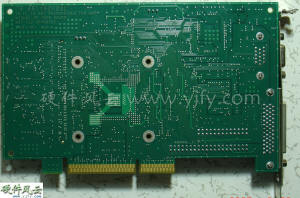
The upper right side
of the front panel of the PCB on the Intel 740 graphics card is
labeled “INTELi740 reference board”. There is also a handwritten
"854C" on the upper right side, and a flying line on the left
side. The handwriting and flying lines are also important signs
of the sample. The date marked on the back of the PCB is 4797,
and there is a "NOT ..." mark such as "NOT FCC APPROVED".
To meet different
needs, chip design manufacturers will introduce one or several
Reference board alternatives.
Both the Evaluation
board and the Reference board are Prototype and are Engineering
samples. Some manufacturers' Prototype do not have Evaluation
board and Reference board, only Evaluation board or Reference
board, or directly called Engineering sample.
3.Test board
After the
completion of the Prototype phase (the last batch of
prototypes as the earliest test board or the design of a new
test board based on the prototype) is the Engineering Sample
Run, which is a small batch test during the development
process. An activity produced. This batch of products is
"FRIST ARTICLE". Through small-scale trial production,
problems in product design and process can be found, and
various hazards, defects, and deficiencies are found in the
ESR and subsequently solved to avoid making mistakes in mass
production.
Test board is
based on Prototype, from small batch trial production to
pre-production, commissioning, revision before and after
product sizing, as well as sampling of official batches.
Therefore, Test board can be divided into unproduced, trial
production, and official product Test board. Samples tested
by customers and media evaluation agencies, mostly test
panels for trial production.
After the product
is released, the manufacturer will improve the product
according to the information of the chip optimization
update, production process innovation and customer feedback.
During this period, the product improvement Test board and
even the redesigned Evaluation board/Reference board will
appear.
Qualification sample
and Customer sample of the conventional classification
method are equivalent to the Test board. It should be noted
that samples in the test board that have been manually
manipulated to cause a large number of line changes and
component changes should be Engineering samples.
This Express 3D
graphics card is a Test board that intel completes the design
and is in trial production, which is no different from the
official retail product. Compared with the Express 3D graphics
Evaluation board, you can see obvious changes from the picture:
the core version of the graphics card is upgraded, the BIOS
version is updated from the 002 version to the 003 version that
is consistent with the official product, and the failed
certification is reduced from four to two. The two vertical rows
of resistors under the fan interface change from full to full
soldering. Also, the date of this card PCB is 98 years and 09
weeks, and the official release date of Express 3D graphics card
is April 15, 1998, which is equivalent to 15 weeks in 1998. The
test for the media evaluation agency is mainly the Test board
before the release date.
In addition, the
following types of boards can also be used as sample
collections.
4.
Demo board
Demo board is similar
to the Test board, with a functional demo board that works and
an appearance show board that doesn't work.
The following INTEL
Pentium Processor Demo Board is the appearance display board.
Pentium Processor Demo Board
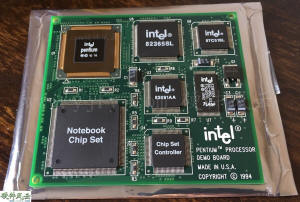
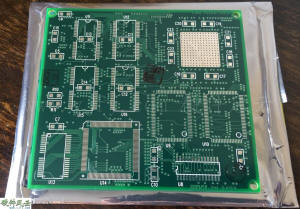
5. Development board
Development board is special products developed, designed or
commissioned by original or third-party manufacturers. Due to
the early production time, small batch size and many functions,
it has some characteristics of the sample and can also be used
as a sample collection. The DKHIQV-PCI board graphics card from
Intel/ Chips&Technologies is shown below.
DKHIQV-PCI BOARD

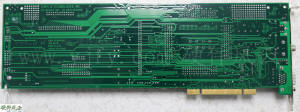
6.
Other
There are also some
special boards that are also used as sample collections. For
example, a card with a sample chip and a commemorative card, a
limited-edition card, a signature card, and a MACH32 graphics
card that has been dyed by the following intel as a fun
collection of samples.
Graphics Ultra Pro


|